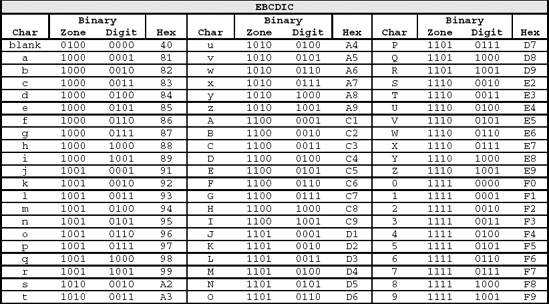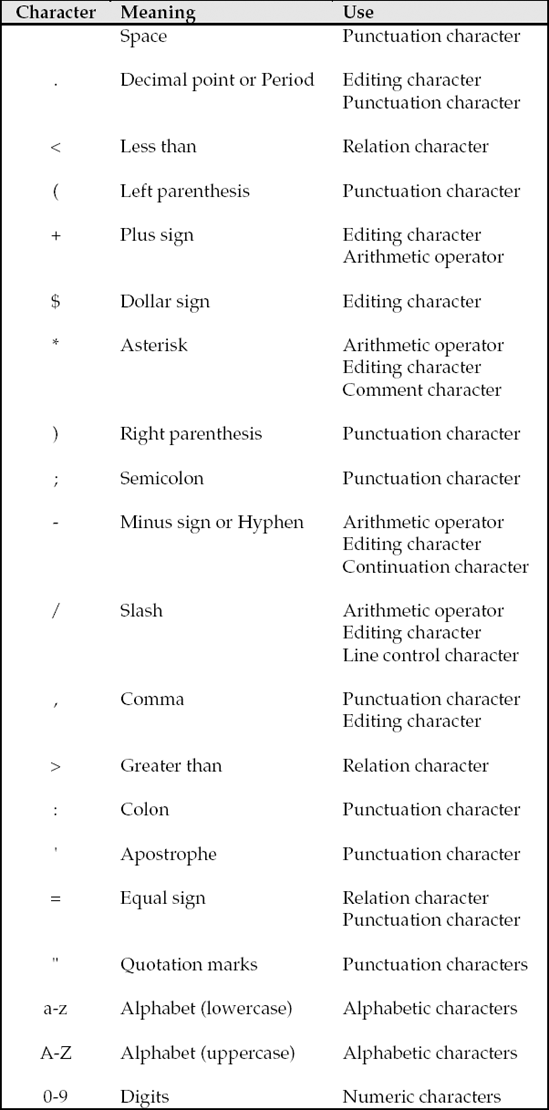Appendix B. COBOL CHARACTER SET AND RESERVED WORDS
EBCDIC CHARACTER SET
EBCDIC, which stands for Extended Binary Coded Decimal Interchange Code and is pronounced eb-ce-dick, is used to represent letters, digits, the character blank, and special characters. The chart shown in Figure B.1 illustrates, in ascending sequence, the EBCDIC collating sequence codes for letters, numbers, and the character blank. In addition, the chart shows the binary representation and hexadecimal codes used by the computer to represent EBCDIC codes.

Figure B.1. EBCDIC codes for letters, numbers, character blank, and corresponding binary and hexadecimal codes.
COBOL CHARACTERS
In COBOL, the primary unit of data is the character. In the COBOL/400 language, the letters of the alphabet, digits, and special characters that form the COBOL character set are represented by a subset of the EBCDIC character set. Figure B.2 shows the complete set of COBOL characters with their meanings and uses.

Figure B.2. COBOL characters with their meanings and uses.
RESERVED WORDS
COBOL/400 incorporates many enhancements that are not incorporated in the ANSI COBOL 85 Standard. Among them are extensions that aid in writing interactive workstation applications as well as support for externally described files.
With these extensions to COBOL/400, ...
Get PROGRAMMING IN COBOL/400: 2nd Edition now with the O’Reilly learning platform.
O’Reilly members experience books, live events, courses curated by job role, and more from O’Reilly and nearly 200 top publishers.

